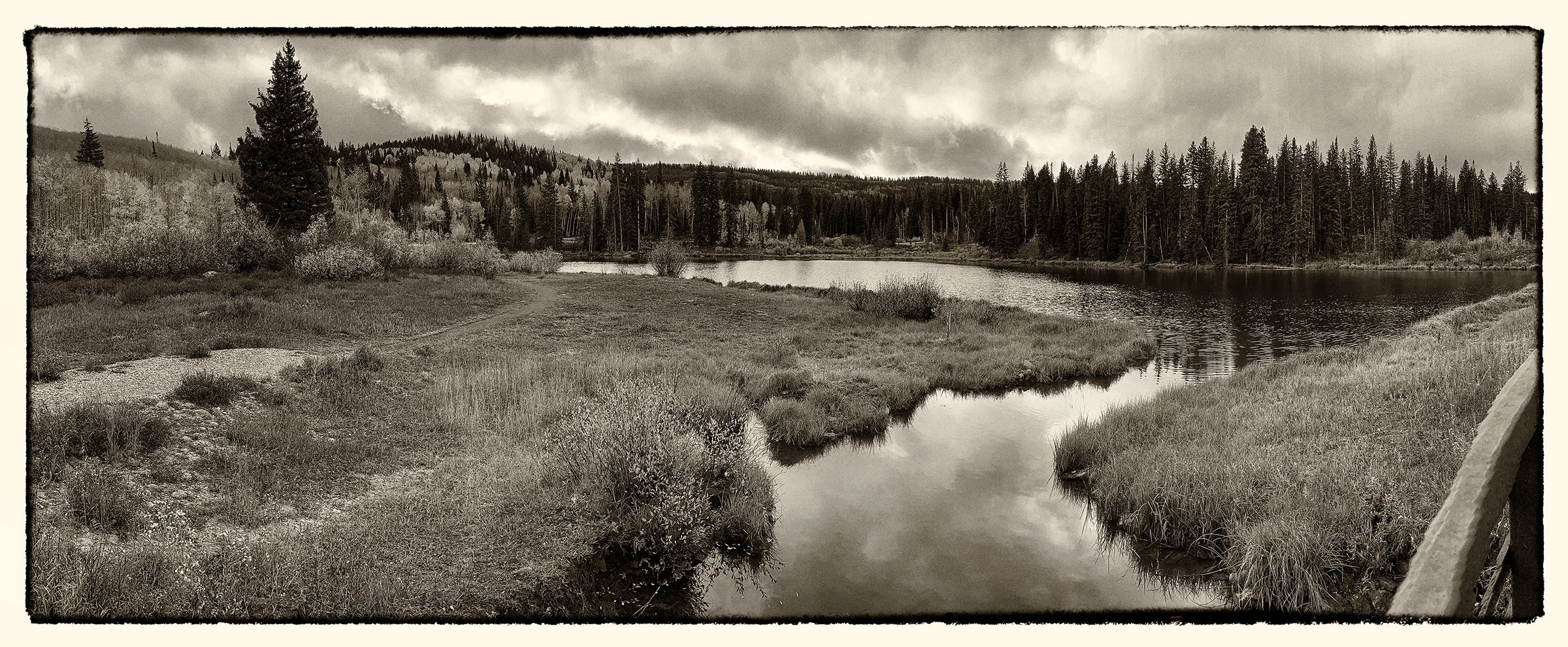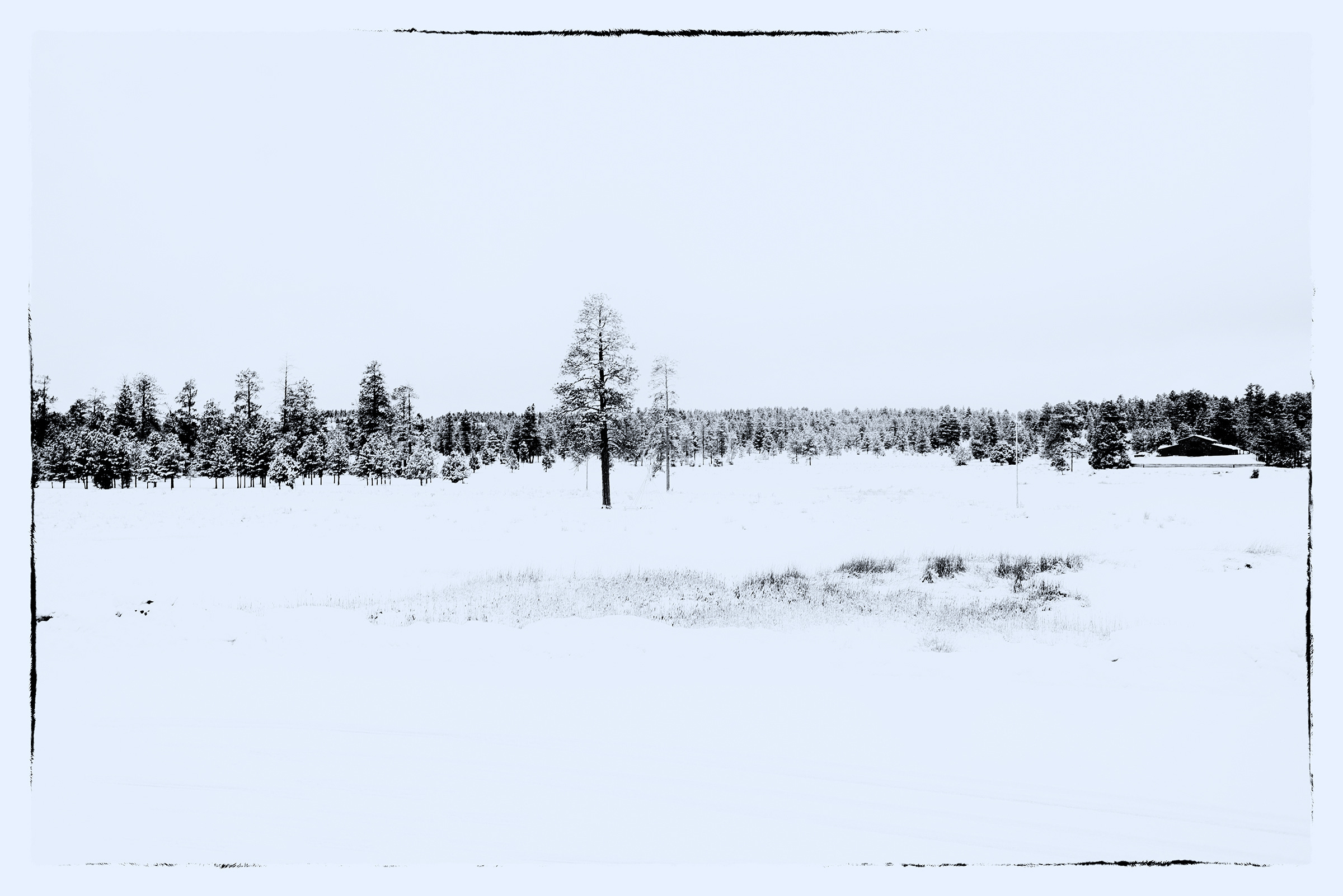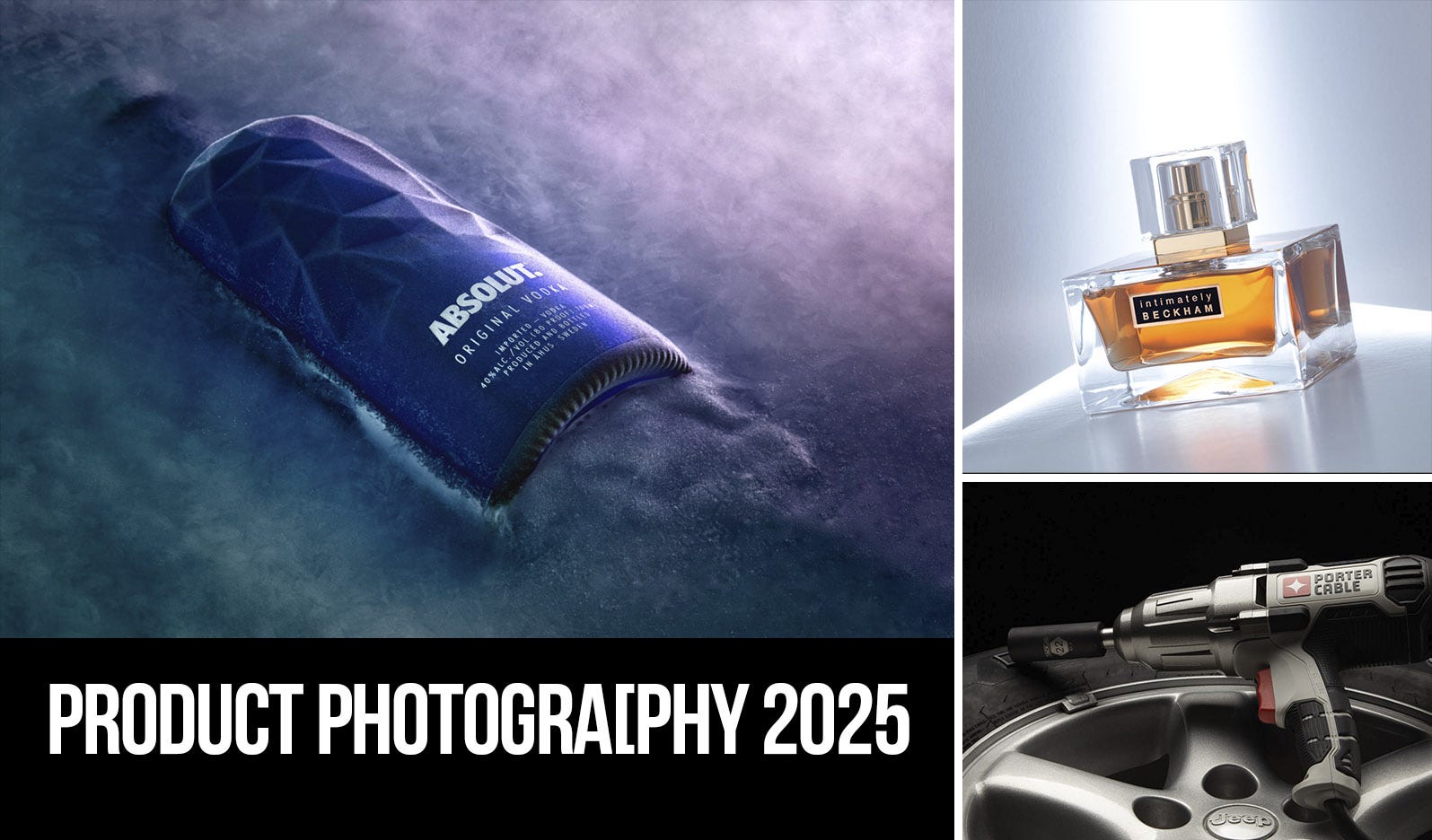Is Art the Result of Being Human, or Does Art Itself Confirm Our Humanity?
I don't know about you, but my art has to come from humans. Period.
Hi, and welcome to my little Substack corner. I write about photography, art, design, and the craft of living creatively. I am glad you are here. Consider subscribing to keep up with what I am doing. I promise not to bore you. If you would like to support my efforts, that would be amazing and so appreciated. Either way, I am super happy you are here.
Before we start, the U.S. Copyright Office has finally clarified and codified its standing on AI. I believe it to be perfectly fair and easy to understand.
AI on its own may not be copyrighted. Not an image or a graphic or a logo or an article.
However, if an AI item is used as an element in a design or graphic, or in aggregate with a human-designed piece, the aggregate may be copyrighted, while the AI element itself cannot be.
Here is a short view of the announcement.
The U.S. Copyright Office released Part 2 of its report on Copyright and Artificial Intelligence on January 29, 2025. The report reaffirms that human authorship remains a fundamental requirement for copyright protection.
Key points include:
AI-generated outputs can only be copyrighted if a human author has determined sufficient expressive elements.
Merely providing prompts to AI systems does not constitute enough human control to warrant copyright protection.
Using AI to assist in the creative process or including AI-generated material in a larger human-generated work does not disqualify the work from copyright eligibility.
The Copyright Office maintains that existing copyright law principles are flexible enough to apply to this new technology.
No changes to existing law are recommended to provide additional protection for AI-generated outputs.
The report emphasizes that copyright protection extends to human creativity expressed through AI systems, but not to material whose expressive elements are determined solely by machines.
This is basically what the office has held for the preceding time, but with this document, they have codified it and clarified the rules.
The AI item may not be copyrighted, but its use in a piece as an element will not preclude the piece from being copyrighted. So if you create an ad with an AI element, the entire ad may be copyrighted, but the individual item created by AI will not be if taken out of context.
If you make a photograph of the high desert in a rainstorm and “generate” a Santa Fe home in the middle of it, the entire image may be copyrighted, but the Santa Fe home itself cannot.
I could use an AI outline to write a book, and that is OK, the book can be copyrighted. But if I generate the book, it cannot be.
I am deep into AI for all sorts of things… except generating “art”. There are far more important things that AI can do than make an artifact.
And to date, no one has even attempted to answer my question:
When you show me a generated piece of ‘art’, what am I expected to see?”
This brilliant piece by Ge Wang on Medium perfectly expresses the conundrum that I have expressed so many times: “When you show me an AI-generated piece of ‘art’, what am I supposed to be looking at?”
“Any process of creation is simultaneously a process of learning, beset by setbacks, confusion, and frustration. Yet, such frictions can, if one sticks with the process, ultimately give rise to something fulfilling: a deeper understanding of how a thing works and how to work with it, accompanied by the feeling that we have learned a bit more about ourselves and what we are capable of achieving. Skipping the process makes about as much sense as “playing” a difficult video game by asking someone else (robot or human) to take the controller and play it in your place, while you verbally offer general prompts about what to do and where to go from the couch. That would still be an experience, maybe even an enjoyable one, but it would be a fundamentally different experience from undertaking the process for yourself.”
— Ge Wang, GenAI Art Is the Least Imaginative Use of AI Imaginable
Every year it seems that the mechanics of photography itself become easier. *
And every new idea becomes “The Destructor.”
I’m old enough to have been around when photography died… again and again.
In-camera meters killed photography.
35mm killed photography.
Zoom lenses killed photography.
Auto Exposure killed photography.
Digital killed photography.
Photoshop killed photography.
Now we have AI doing the butchery.
But it really isn’t, you know. No more than the Brownie camera killed photography, and no, I am not old enough to remember that, so stop the snickering.
AND THE REASON IS… AI is not photography.
Photography is created by humans who have struggled to learn how these devices work, mastering their abilities, and using them to convey thoughts, ideas, stories, metaphors, personal connections, and simply something that looks interesting and we snatch it out of time in a millisecond.
Photographers create once-in-a-lifetime images.
Every. Time. We. Snap.
Whether a landscape. a still life for a client, a portrait for fun, or a snapshot to remind us of where we parked the car at the mall, it is a singular moment in time captured forever in two dimensions. It will never happen again. It is literally a once-in-a-lifetime snap.
By a person.
* And every year the art of photography becomes harder.
Everywhere you look, people and corporations are trying to create new definitions for photography and what it means to be a photographer. Their main hook; the convenience, ease of use, and problem solving technology.
You can’t really be a photographer these days without a brand-spanking new mirrorless camera with a cadre of mind-boggling expensive lenses and capable of making gigamillions of pixels.
Cause they ain’t nothin’ that says “visually engaging photograph” more than gigamillions of pixels and a mirrorless viewfinder… or something.
Although none of that matters when looking at the very thing created by that technologic marvel.
It is either a photography you like, or it isn’t. Period. Mic-drop as the cool kids say.
What if the point of art is that we actually make it? - Ge Wang
Imagine sitting next to a pianist, and giving them basic instructions, like; “louder”, “go higher”, “make that weird chord again”, and on.
Are you then a pianist?
If this were a live concert would YOU stand for the ovation?
While the amazing pianist who had spent years in practice rooms refining their craft, the one who actually created a fantastic piece of music that engaged the audience, making them want more, slinks off stage, you stand in the spotlight basking in the revelry of your masterpiece?
Does that sound right to you?
I think that the point of art is that someone, a human as frail and confused and fearful and brave and dealing with the same shit I deal with, actually made it.
The conquest of art.
Overcoming every hardship we can imagine made something to share with us. Or maybe it just came to them in a split second and they whipped it out. Awesome.
Because humans are awesome.
Machines, by definition, are not awesome.
They are tools that change nearly every day (Sony?…)
The people at the U.S. Copyright Office understand this better than most creatives do.
There will be screams and harsh gnashing of teeth by those who want to skip all the messy “working on it” crap and just jump to the front of the line with their machine outputs.
Bless their hearts.
But art is not made that way, consumers are made that way.
Wang begins his treatise with this quote from AI music company, Suno’s CEO:
“I think the majority of people don’t enjoy the majority of the time they spend making music”
He is saying that artists hate the work to become artists. What they really want is to simply make stuff without breaking a sweat, getting their hands dirty, or wasting time making work that doesn’t break through and make them millions.
I refer to this idea as pure, unadulterated BULLSHIT.
Yes, practice is hell.
Learning flamaddidles, French paradiddles, press rolls so tight they buzz, playing in 7/4 or 12 and 2/3 / 4, flow patterns, poly-rhythmic patterns, independence, fingers bleeding and blistered, blowing an intro fill then spending hours to make sure that never happens again… this is how a drummer is made.
Typing it into an Ai sound machine can make it sound ‘like’ a drummer, but it won’t be a drummer—it will be a machine-made imitation… and what the fuck is interesting about that? Aluminum foil is made by a machine.
On this, I particularly agree with Wang:
“Statements like Suno’s perfectly captures the prevailing public mindset about AI: that Artificial Intelligence is little more than a labor-saving optimization tool. This mindset tends to be good for #Capitalism, but betrays not only a lack of understanding of why people make music, but also a profound lack of imagination regarding how we could, or would want to live with our technologies in our lives. I, for one, would go as far as to say using generative AI for creative expression in this manner (“describe what you have in mind and AI will create it for you”) amounts to the least imaginative of use of AI that I can imagine. Such systems offer the promise of skipping the labor by bypassing the creative process and, yes, the difficulties, confusion, and frustration inherent in such endeavors…”
— Ge Wang, GenAI Art Is the Least Imaginative Use of AI Imaginable
AI isn’t creating art, it is creating consumers for their product. Consumers do not want to spend even a moment learning anything about the craft, they are just looking for the fast ramp to a result, albeit something they have little to no control over.
The challenge for photographers going forward is two-fold:
How to use AI in creative ways that keeps human creativity in the driver’s seat and the art we create into new and exciting places that we may not even imagine at this moment.
How to steel ourselves against this massive consumer push to get to the end quickly, create tons of “content” to be consumed like sugar being digested in moments and passed through our bodies quickly while producing no good and leaving only garbage and sludge.
This will not be easy.
There are forces with more money than God busily trying to lobby the Copyright Office to be “more inclusive” and “more lenient” in their ruling, although I think it is fair and very lenient as it is.
What say you?
Up for the challenge?
PRODUCT PHOTOGRAPHY WORKSHOP 2025
Well. it’s time for our next 8-Week Workshop. This one is on product photography, and by “product” I mean hard products: power tools, kitchen aids, cosmetics… The stuff you have to shoot for day-to-day customers for everything from e-commerce to advertising.
You can find out more about this workshop, starting dates, fee and such here:
Product Photography Workshop Overview
When you are ready, here is how I can help you succeed.
Group Mentorship: a small group of photographers who meet to show images, work on their portfolio, and build their businesses with help from a wonderful group. Lifetime membership for one fee.
One-on-one Mentorship: You and me - working together in an intense 6-month push to get you on the way to over $30K in additional revenue. The work we lay down will help you increase and scale your business for years ahead.
Coming in 2025, a One-on-One, 6-week plan to get your marketing system in place. You will see results immediately, and by results, I mean assigned work that pays you. More coming.








Great post. Art is a conscious act, and the picture or song or book or performance is merely the result of it. Machines can't act; they can only assemble what people have already made for them through acts of their own. AI is good at assembling, but that's all it can ever be good at.
Your title question is also the answer. Yes, art is the result of being human and art itself confirms our humanity. Since the dawn of man, art has been within us and made by. Cave etchings and paintings show that we are creative, expressive creatures. AI will never be that.